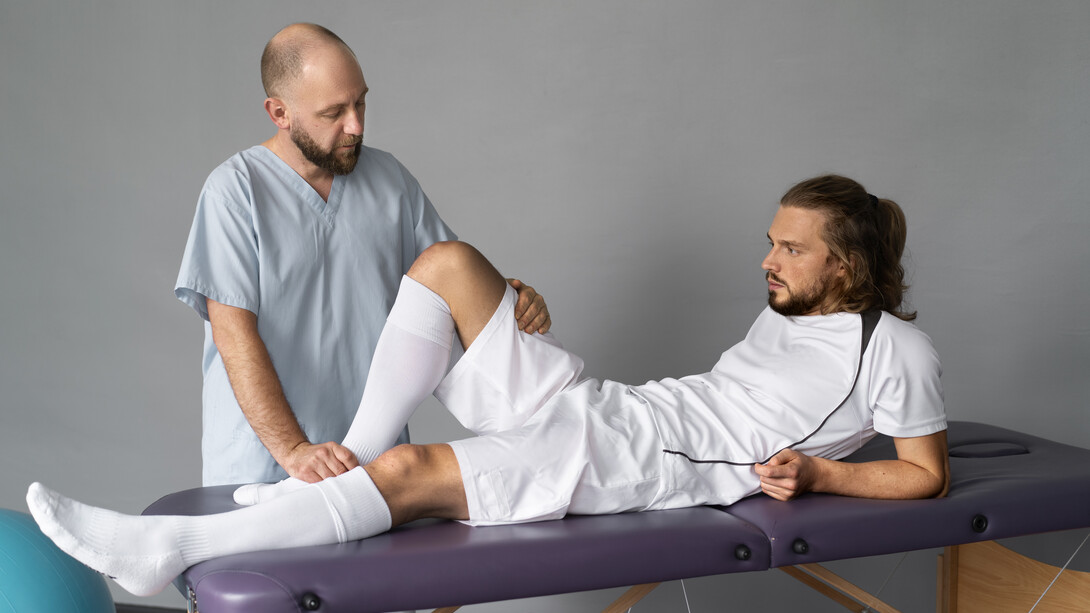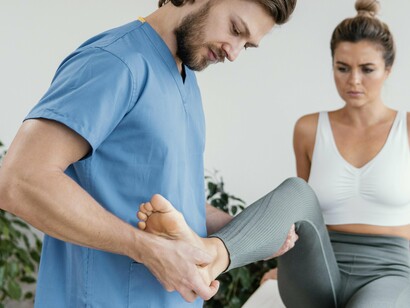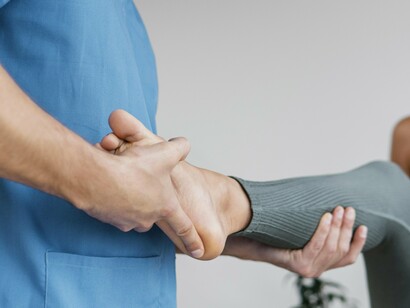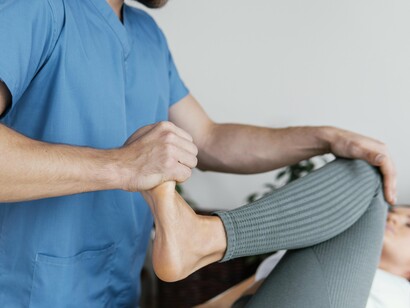When we think of sports medicine, the first thing that usually comes to mind is that of pro-athletes receiving specialized treatment after a game or injury. However, sports medicine is not just for elite athletes; all of its principles and practices are highly relevant for individuals who engage in everyday fitness activities, including those who consider themselves non-athletes. Whether you're a weekend warrior, someone trying to maintain a healthy lifestyle, or recovering from an injury, sports medicine has a lot to offer. This article explores how sports medicine can benefit non-athletes, helping them optimize their fitness routines, prevent injuries, and improve their overall well-being.
What is sports medicine?
Sports medicine is a select branch of medicine that focuses on physical fitness, the treatment of injuries related to sports and exercise, and the prevention of such injuries. While it was traditionally developed to treat athletes, the field has broadened to include anyone engaging in physical activities, regardless of their level of participation or fitness goals.
Sports medicine specialists, including physicians, physical therapists, athletic trainers, and nutritionists, are trained to understand how the body responds to physical activity. They can provide specifically tailored advice, treatments, and training plans designed to improve physical health and prevent injury, making their expertise incredibly valuable to anyone who exercises regularly.
Why sports medicine is important for non-athletes
1. Injury prevention
One of the core aspects of sports medicine is preventing injuries. Non-athletes, particularly those new or relatively new to fitness or returning after a long break, are often prone to injuries like sprains, strains, or even more serious conditions such as tendinitis. Poor form, improper technique, or overexertion are common culprits.
Sports medicine practitioners can assess a person’s biomechanics, posture, and muscle imbalances to identify potential injury risks. They can then recommend exercises, stretches, or modifications in daily activities to correct these issues. This can be particularly useful for individuals who participate in fitness activities like running, cycling, or weightlifting without formal training.
2. Personalized fitness plans
Another significant benefit of sports medicine for non-athletes is the creation of personalized fitness programs. A fitness plan that works for one person may not be suitable for another, especially when considering individual factors like age, medical history, lifestyle, and fitness goals.
Sports medicine specialists take these variables into account when designing a program that promotes health, reduces the risk of injury, and aligns with the person’s physical capabilities. This approach helps non-athletes avoid common pitfalls, such as overtraining, which can lead to burnout or injury, and undertraining, which may result in little to no progress.
3. Improved rehabilitation and recovery
Injuries can happen to anyone, even those who don’t engage in high-level sports. Non-athletes might suffer from common issues such as back pain, joint problems, or muscle strains due to improper movement patterns or repetitive stress from daily activities.
Sports medicine professionals are skilled in rehabilitative techniques that aid recovery while minimizing downtime. By using physical therapy, specific strengthening exercises, and other therapeutic modalities like ultrasound or massage, they help restore functionality. They also offer guidance on when it’s safe to return to normal activity and how to gradually reintroduce exercise post-injury without risking further harm.
4. Enhancing daily performance
Sports medicine can also improve the performance of non-athletes in daily life. Even routine activities like lifting groceries, climbing stairs, or walking for extended periods require a certain level of strength, flexibility, and endurance.
By adopting principles from sports medicine—such as improving core stability, flexibility, and functional strength—individuals can boost their overall physical fitness. This leads to improved performance in everyday tasks, reduced fatigue, and better posture, which can help prevent long-term health issues like chronic back pain.
5. Holistic approach to health
Sports medicine takes a holistic approach to physical health, considering factors such as nutrition, mental well-being, and injury prevention. Non-athletes can benefit from this integrative perspective, as sports medicine professionals often provide advice on proper nutrition for fitness, hydration strategies, sleep optimization, and stress management.
For example, proper nutrition is essential for fueling workouts and aiding recovery, whether you’re an athlete or just exercising to stay healthy. Sports nutritionists can guide non-athletes on how to balance macronutrients and micronutrients to support their fitness goals, maintain energy levels, and enhance recovery.
Key principles of sports medicine for non-athletes
1. Gradual progression
One of the most important principles of sports medicine is gradual progression, particularly when starting a new fitness program. Non-athletes are at risk of overtraining or pushing themselves too hard, too soon, leading to injuries. Sports medicine professionals recommend starting with a lower intensity and progressively increasing the volume and intensity of exercise.
This approach allows the body to adapt to the new demands placed on it, strengthening muscles, ligaments, and tendons over time. For non-athletes, gradual progression not only reduces injury risk but also increases motivation by providing measurable milestones in fitness progress.
2. Cross-training
Many non-athletes fall into the trap of repetitive motion, engaging in the same activities day after day. Running the same route or lifting the same weights without variation can lead to muscle imbalances and overuse injuries. Sports medicine emphasizes the importance of cross-training—alternating between different types of exercises to target different muscle groups.
Cross-training can include a mix of cardiovascular activities like cycling or swimming, strength training, flexibility work, and balance exercises. This approach provides a well-rounded fitness routine that can prevent overuse injuries and improve overall physical conditioning.
3. Proper warm-up and cool-down
Warming up before exercise and cooling down afterward are often overlooked by non-athletes. However, these simple practices can make a big difference in preventing injury and improving flexibility. A sports medicine specialist can provide guidance on proper warm-up techniques, which help increase blood flow to muscles, reduce stiffness, and prepare the body for activity.
Similarly, cooling down with gentle stretches helps reduce muscle tightness, lowers the risk of delayed-onset muscle soreness (DOMS), and promotes faster recovery.
Common injuries in non-athletes and their prevention
Even non-athletes face a range of potential injuries when participating in physical activities. Understanding the most common injuries and how to prevent them is crucial for long-term health and fitness.
Shin splints: often caused by running or jumping, shin splints can be avoided by wearing proper footwear and gradually increasing the intensity of workouts.
Plantar fasciitis: this foot condition is common in people who stand for long periods or engage in repetitive activities. Stretching, wearing supportive shoes, and maintaining a healthy weight can help prevent it.
Lower back pain: poor posture, weak core muscles, and improper lifting techniques can cause lower back pain. Strengthening the core and practicing proper form during activities like lifting and bending are essential prevention strategies.
Knee pain: knee injuries can result from high-impact activities like running or from improper form during strength exercises. Strengthening the muscles around the knee and maintaining proper alignment can help prevent injury.
Conclusion
Sports medicine has evolved beyond its original focus on athletes and now offers tremendous benefits to non-athletes looking to improve their fitness, health, and quality of life. By embracing the principles of injury prevention, personalized fitness plans, gradual progression, and a holistic approach to health, non-athletes can enhance their physical performance, recover from injuries faster, and reduce the likelihood of future injuries.
Incorporating sports medicine practices into everyday fitness routines helps individuals exercise smarter, move better, and enjoy long-term physical health—whether they’re training for a 5K, managing daily tasks, or simply trying to stay active and healthy.















